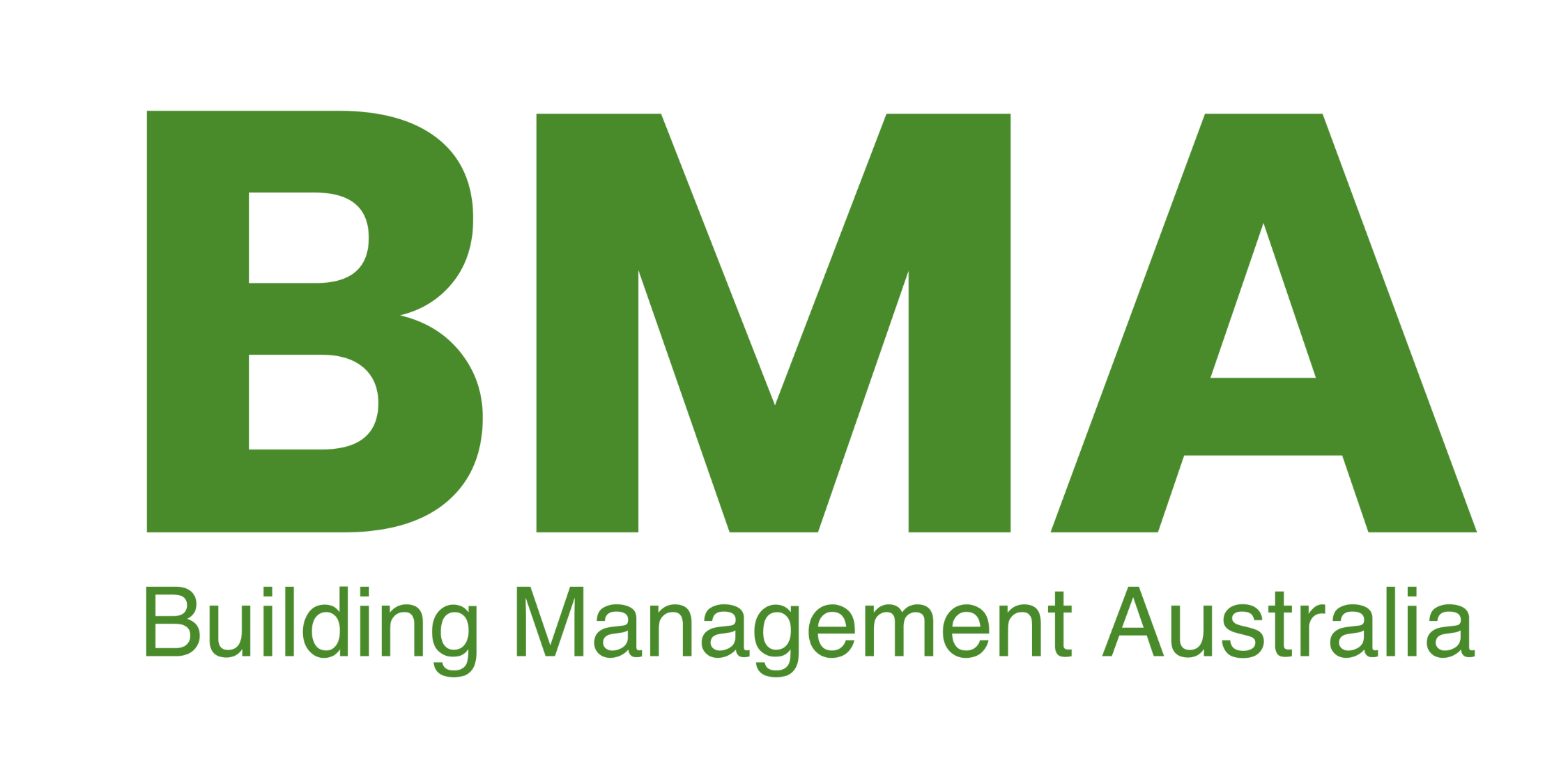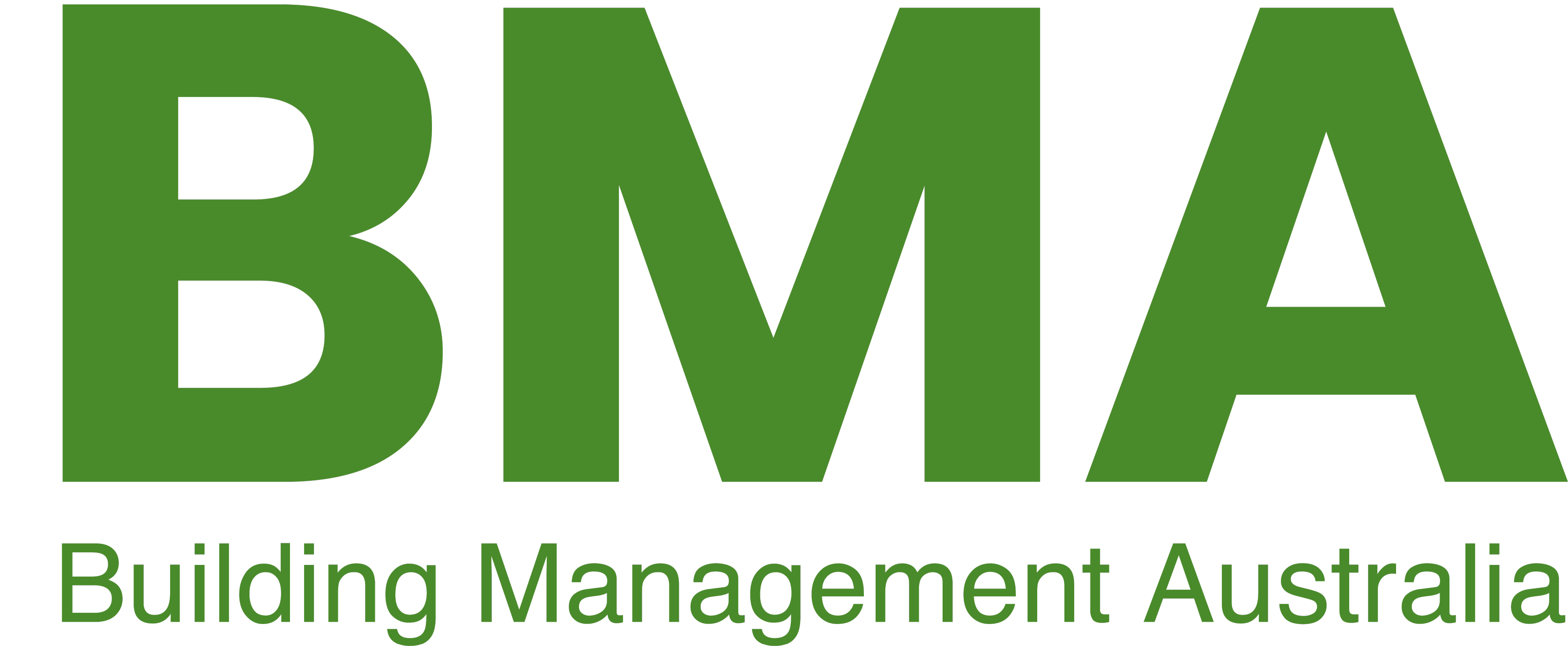Protecting Strata Committees from overcharging

Protecting Strata Committees from Overcharging with Expert Building Management Services Recent developments have highlighted the potential overcharging in strata maintenance and repairs, emphasising the need for effective building management services. At Building Management Australia (BMAUS), we understand the challenges strata committees face and are committed to ensuring fairness and transparency in all dealings. Here’s how professional building management services like BMAUS can help prevent the issues brought to light in recent reports: Expertise in Quote Verification A proficient building manager can meticulously evaluate quotes, identify overpriced or inflated figures, and challenge contractors on discrepancies. BMAUS ensures that all quotations are fair and accurately reflect the required scope of work. Relationship Management Building managers foster relationships with reliable contractors known for delivering quality work at reasonable rates. This network helps prevent situations where contractors might feel encouraged to hike prices due to perceived anonymity. Project Oversight Professional building managers oversee projects from start to finish. This ongoing oversight ensures tasks are executed as planned, curbing unnecessary changes and preventing billing for unfinished work. Legal Compliance Knowledge Recent legislative updates, such as amendments to the Design and Building Practitioners Act, make it essential to have a building manager who is well-versed in these regulations. Their expertise helps navigate the legal landscape and maintain compliance without inflating costs. Transparent Practices BMAUS champions transparency by openly disclosing any commercial relationships with contractors and always acting in the best interests of our clients. This approach aligns with upcoming legislative reforms aimed at enhancing industry transparency. Time and Stress Savings Managing complex building projects requires significant time and expertise, which many owners may not have. A skilled building management service alleviates this burden from the strata committee, providing professional oversight while conserving residents’ time and energy. Regular Reporting and Communication BMAUS ensures strata committees are well-informed through regular, detailed reports about ongoing works, expenditures, and any arising issues. This continuous communication facilitates timely and effective decision-making. Dispute Resolution When discrepancies or disputes occur, a professional building manager can mediate using their industry expertise to resolve conflicts efficiently and equitably. Continuous Improvement As regulations and technologies evolve, so does BMAUS. We stay updated with industry best practices, new laws, and emerging technologies to continuously enhance our services and safeguard our clients’ interests. In summary, while recent reports of overcharging in strata maintenance raise concerns, they also underscore the critical role of having a reliable, competent building management service. BMAUS is dedicated to safeguarding strata committees from such issues, ensuring transparent pricing, quality workmanship, and peace of mind for all stakeholders. By choosing a professional service like BMAUS, strata committees can focus on fostering a harmonious community, confident that their property maintenance is in trustworthy hands.
Key Benefits of the Tradesmen Register
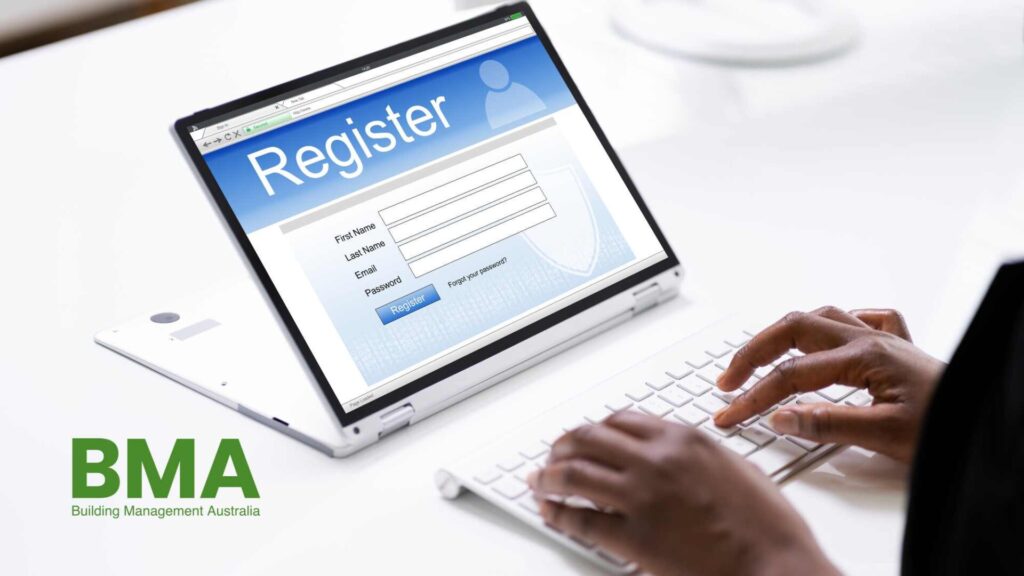
As a building manager, ensuring the efficient and secure operation of your building is paramount. The BMA Exclusive Tradesmen Register system was designed with this goal in mind. This innovative system provides live reporting on tradesmen’s attendance and time spent onsite, offering a comprehensive solution to manage and monitor tradesmen’s attendance and activities. According to Andrew Veron, BMA’s director, the reporting system provides strata agents full details of each tradesman, including the reason for their visit and the time spent on site. This transparency helps verify invoicing and keeps track of repairs, ensuring that all maintenance activities are accounted for accurately. Key Benefits of the Tradesmen Register The Tradesmen Register serves two crucial roles: enhancing security and verifying the time spent onsite. By tracking the entry and exit of tradesmen, the system ensures that only authorised personnel are allowed within the premises. This added layer of security is vital for maintaining the safety and integrity of the building. Moreover, the system’s ability to log the exact time tradesmen spend onsite helps in verifying the accuracy of their billing. Building managers and strata agents can cross-check invoices with the actual time logged, ensuring that the building only pays for the work done. This level of oversight helps in maintaining a transparent and accountable maintenance process. BMA: Committed to Extra Service and Innovation At BMA, we are committed to providing exceptional service and innovative solutions for building management. The Tradesmen Register is a testament to this commitment, offering a state-of-the-art tool for monitoring building activities. When a tradesman enters or exits the building, they are required to scan a visitor barcode. This simple yet effective process ensures that every visit is recorded in real-time, providing an accurate log of all tradesmen’s activities. This not only helps in maintaining a detailed record but also aids in resolving any discrepancies that may arise regarding the time spent onsite. Conclusion The BMA Exclusive Tradesmen Register is more than just a tracking tool; it is a comprehensive system designed to streamline building management. By enhancing security, verifying time spent onsite, and providing detailed reporting, it empowers building managers to maintain control and transparency over maintenance activities. Embrace the future of building management with BMA’s innovative solutions and ensure the seamless operation of your building.
Ventilation system maintenance why it’s more important
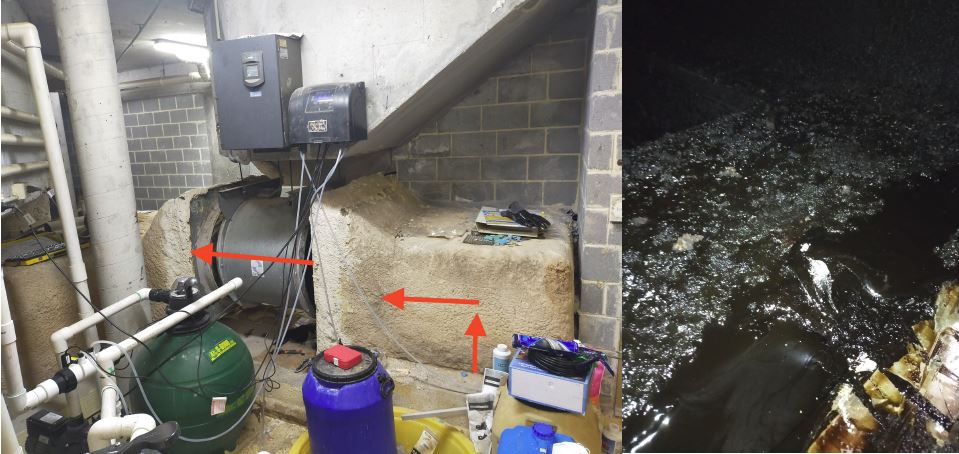
Managing Power Outages: A Critical Task for Building Managers The pandemic has put building ventilation in the spotlight – particularly the quality and quantity of air it circulates. And now more than ever – since HVAC ventilation systems were first widely introduced – it’s crucial they are regularly and properly maintained to help ensure a clean and safe environment, as well as optimal performance and cost efficiency. But does your building manager know how often to schedule maintenance? While it’s usually recommended that ventilation systems’ motors, components and ducts be checked, tested and cleaned every four-to-six years and air filters changed every three months, these timings can differ, largely due to the building’s location. “A building situated near high-traffic roads, a construction site or public works project will be exposed to a greater amount of airborne dust and dirt, which can find its way into the ventilation system’s ducts, compromising its performance and the health and safety of residents,” explains Building Management Australia’s General Manager Ben Mees. “Ventilation systems exposed to higher-than-average dust and dirt need more regular maintenance. Our building managers closely monitor their ventilation systems, and their knowledge of their building and what is happening around it enables them to better determine whether maintenance is needed more often.” Why is regular maintenance important? Thorough professional maintenance of a building’s entire ventilation system enhance its performance, reduces running and replacement costs, and helps ensure a healthy and safe building environment. “Regular duct cleaning and sanitising and air filter replacement enables the system to circulate clean air throughout the buildings. A build-up of grease, dust, lint and dirt can create a fire risk and an ideal breeding ground for harmful bacteria, including Legionella which can cause Legionnaires’ Disease, and reduce optimal air flow, which is recommended for reducing exposure to COVID-19*,” says Mees. “Checking and testing the system’s motor and components is also a vital part of regular maintenance, as it identifies any issues and wear and tear early, which reduces the incidence of costly breakdowns, increases its life, and improves its sustainability.” Mees says that problems can be compounded when poor building design prevents proper maintenance cleaning. “We had a case where openings had to be retro-fitted to enable cleaning to be done. That is costly and time consuming, which reinforces how important it is for foresight to go into a building’s design. It goes a long way to reduce risks and maintenance,” he adds. Health and safety As dust, lint and dirt promote the growth of harmful bacteria, mould and fungi, the system’s ducts require thorough cleaning and proper sanitisation. “Simply opening a clogged duct grill and grabbing accumulated lint and dirt won’t improve air flow or keep everyone safe and healthy. Our building managers organise specialist ventilation system cleaners to perform a thorough ‘deep’ clean and sanitisation and microbial testing of the entire system as needed,” says Mees. Motor and component maintenance benefits There are many benefits of regular ventilation system motor and components maintenance including: • Ensuring optimal performance: by identifying issues and parts that are starting to suffer wear and tear, like erosion, cracks and rust, or have loosened or need lubricating. • Reducing operating costs: Repairing and replacing damaged parts can improve energy efficiency and reduce the likelihood of costly breakdowns. • Increasing the system’s longevity, which saves owners money and is kinder to the planet. • Helping maintain clean, healthy and safe air: The system’s fans, air registers and control dampers play a vital role in maintaining an optimal flow of clean, safe air throughout the building. When operating efficiently, they circulate the correct amount of air needed to create a comfortable, safer environment for residents and reduce moisture within the ducts. “When the interior of the ducts become moist, and stay moist, dangerous bacteria, mould, and fungi grow,” says Mees. • Improving fire safety: by checking that the system will shut down in a fire and that the fire dampers are set to automatically close and block the further spread of fire when higher than normal temperatures are detected. Dampers are a passive fire protection feature and close when either their thermal element melts or an electronic signal is sent from a fire alarm system. • Maintaining low noise emission. Parts that have become loose, like fan belts and bearings or simply need lubricating can increase noise levels considerably, impacting residents’ quality of life.
How building managment Australia reduces the imapact of power outage
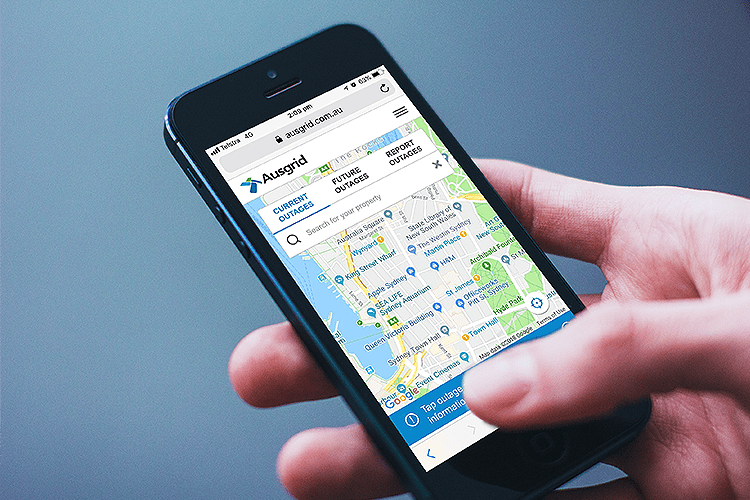
Managing Power Outages: A Critical Task for Building Managers Power outage announcements ignite a period of intensive planning and preparation for our Building Managers, to reduce the impact on residents’ safety, security and lifestyle. And while all our Building Managers are highly experienced in managing power outages, every building is different and every outage brings a different set of challenges. The Impact of Power Outages in Multi-Level Buildings Power outages in multi-level buildings are more than a temporary inconvenience; they can compromise safety and security and can be costly, as an alternate source of power is sometimes required and sudden shutdowns can damage the building’s systems and machinery, such as the HVAC, water pumps, and lifts. So it’s not surprising that notifications of power outages of any duration from Ausgrid spark a military-style operation by our Building Managers, who with the backing of our General Manager and Operations Manager, immediately start to plan strategies to reduce the impact on everyone living, visiting and working in their buildings. Proactive Measures by BMAUS Building Managers One of the first steps our building managers take is to notify the building’s Strata Committee of the proposed power outage and meet with them to discuss considerations and how they will manage the outage. “Our Building Managers understand the importance of collaboration in these situations and liaise closely with strata management and owners committees, which gives everyone peace of mind,” says Building Management Australia Director, Andrew Veron. Collaboration vital In multi-level buildings, power outages, even those that take place during the ‘quiet’ hours of midnight to 5am, require considerable planning and management by the Building Manager. This can include checking or providing emergency lighting, hiring an electrician for the shutdown and restart of the HVAC, water pumps and lifts, hiring security guards to keep the building secure, and arranging for service support from the lift and fire protection system providers. Mitigating Costs and Disruptions For diverse mixed-use buildings like the Building Management Australia-managed World Tower low-rise, which extends from level 11 (street level) to level 37, even a short power outage requires collaboration with many stakeholders, extensive planning in the lead up, and hands-on management during the outage to ensure the many systems and machinery shutdown and start-up without issue, and adequate access and security is maintained. “The World Tower can have thousands of people ‘in house’ at any one time, and there’s multiple access points and elevators to consider. Good planning and preparation are crucial to ensure a smooth outcome. On the evenings of the power outages at the World Tower, we had a team of specialists at the ready, as well as the Building Management team,” explains Andrew Veron. Power outages that last longer than a few hours can be costly events for owners as an alternative power supply is required. An example was when Ausgrid notified the Aston Apartments Strata management in late 2020 of a seven-day power outage, which meant the Sydney CBD building’s owners were facing a cost of around $20,000 for a diesel generator to provide power – plus the constant noise and fumes for an entire week. “Faced with such a disruptive, long and costly outage, we decided to secure a change in the duration of the proposed outage. Negotiating with Ausgrid is time-consuming – and challenging – but our team is experienced with dealing with external providers and were successful in reducing the outage from a full week of no power – a total of 168 hours – to just three hours of no power and 15 hours of low power, enabling the building’s essential facilities and services to operate, such as lights, doors, fire and security systems and lifts,” says Andrew. “This reduction in outage duration also meant a costly noisy generator would no longer be required.”
Why asset registers benefit building residents and strata managers

At BMAUS, Asset Registers are much more than simply ‘laundry’ lists of fixed assets: well-maintained registers can help improve a building’s operational efficiency, reduce costs, preserve its value, and improve the comfort, safety and security of residents. “Our Building Managers not only ensure their registers are kept accurate and current but know how to use the information to enhance their building and benefit its owners and strata managers. Put simply, they treat Asset Registers as active documents that ‘work’ to improve their building, reduce costs and make reporting easier and less stressful. Too often registers are poorly maintained and not used beyond their basic purpose,” says Building Management Australia (BMAUS) General Manager Ben Mees. The basic purpose of Asset Registers An Asset Register’s purpose is to record information on all the building’s assets, which typically include the HVAC, lighting, fire, security, garden irrigation systems, water pumps, diesel generators, pool and spa heating and maintenance systems, and gym equipment. Building Asset Registers usually feature the following information of each piece of equipment: Name and description including function and capacity Purchase date and price Installation date and location Serial/model, tracking or ID number Manufacturer and supplier Current age and condition Depreciation and current value Estimated useful life Performance changes/issues Preventative maintenance performed plus dates and costs Repairs performed, dates and costs Estimated replacement cost Replacement date and amount Why it’s crucial Asset Register information is accurate and current Asset Registers with inaccurate, outdated and omitted equipment information can impede preventative maintenance scheduling, increase the incidence of costly repairs, breakdowns and replacements, make sourcing parts and specialist contractors more difficult, and make budget setting, EOFY tax reporting and owner corporation and strata manager reporting and meetings more challenging and stressful. “With information on the condition, performance and status of each fixed asset, an accurate and up-to-date Asset Register helps our Building Managers maintain an efficient, cost-effective building and gives everyone at strata meetings the right information to make decisions and projections for equipment replacement and budgeting,” explains Mees. “Our Building Managers maintain their building’s Asset Register electronically and store them on ‘the cloud’. This not only enhances security but makes it quick and easy for approved parties such as owners corporation representatives, strata managers and financial advisers to access them.” Why regular audits are vital In addition to regularly checking their building’s equipment, our Building Managers schedule regular equipment audits by specialist contractors. “Audits update the Asset Register’s information on a building’s equipment. Our Building Managers take on board any amendments made by the auditor when planning preventative maintenance and planning for end-of-life replacement. Basically, audits help our Building Managers head potential problems off at the pass,” says Mees. Maintenance schedules In addition to maintaining accurate and up-to-date information on their building’s equipment, our Building Managers also link their building’s Asset Register to its Maintenance Schedule. Linking these two documents with each piece of equipment’s age, condition, performance, supplier, estimated end of life date, and service and repair history, they reduce costs and improve residents’ comfort, safety and convenience by: more accurately scheduling preventative maintenance which improves efficiency and reliability and reduces the incidence poor performance and costly breakdowns providing a better understanding of future equipment service and replacement costs which facilitates budget planning alerting Owners Corporations and strata managers to equipment that is nearing its end of life, which gives them adequate time to source replacements and negotiate favourable prices. “Replacing a piece of equipment when it suddenly breaks down is costly as there isn’t time to broker a good price and installation is performed at ‘emergency’ rates, as the contractor is hired on short notice,” says Mees.
The importance of servicing fire sprinklers
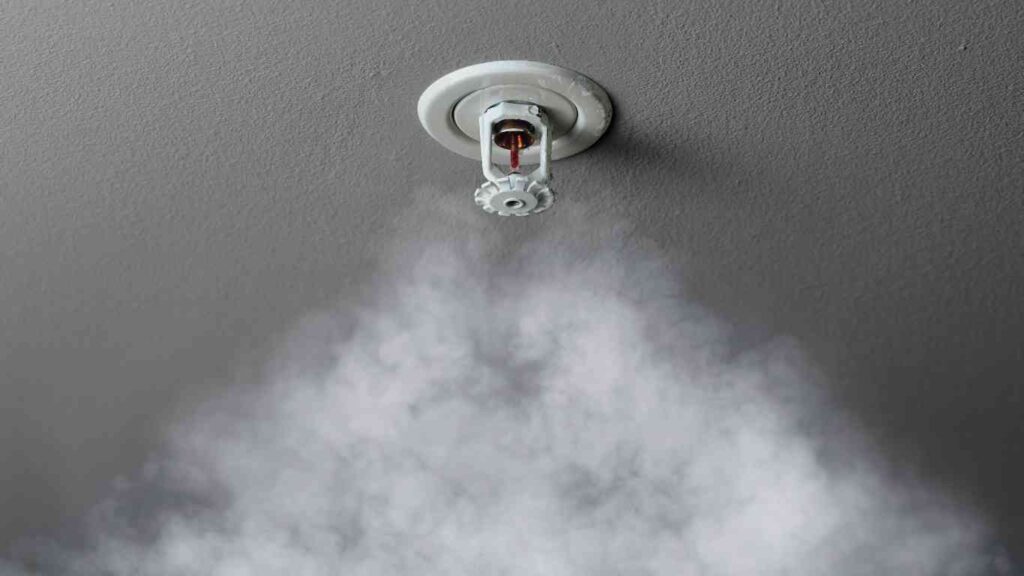
For building managers, ensuring the safety of a building’s residents is a top priority – and that includes protecting occupants and the building from fire. Automatic fire sprinklers are one of the most effective methods of putting out fire, which is why it’s vital – and legally required – that they are regularly inspected and tested. This is where BMAUS building managers play a crucial role. “They might be small but fire sprinklers can help save lives, reduce harm and minimise property damage in the event of a fire,” says Building Management Australia (BMAUS) General Manager, Ben Mees. “Our team of building managers prioritise the maintenance of their building’s fire safety system because a fully functioning fire sprinkler system can automatically put out a fire before it spreads. Building managers monitor the system throughout the year and regularly bring in specialist contractors to check, test and maintain sprinkler systems to ensure they automatically activate and operate without a hitch.” BMAUS building managers monitor their building’s fire safety systems and ensure only fire safety practitioners accredited by the Fire Protection Association Australia (FPAA) inspect, assess and test the sprinkler systems. “Fire safety practitioners can identify any issues and wear and tear, replace parts, and conduct annual system tests. Their assessment is also needed for the issuing of the building’s Annual Fire Safety Certificate,” says Mees. There are several financial benefits to regularly testing and maintaining a sprinkler system: – if insurance companies find that a fire sprinkler system hasn’t been regularly tested and maintained, they may void your property insurance – avoid the risk of receiving an infringement notice and fines – you’ll avoid costly false-alarm fire brigade call-outs. By regularly maintaining the sprinkler system, you’ll help identify potential issues that may cause such call-outs. “And, of course, having experts to frequently maintain and test fire sprinkler systems helps reduce the risk to human life and also property loss,” says Mees. How effective are sprinklers? Fire sprinklers are recognised by fire safety and protection organisations worldwide as a vital part of a building’s fire safety system. According to Fire & Rescue NSW (FRNSW), automatic sprinklers significantly improve the safety of a building’s occupants in the event of fire and can “prevent a fire from escalating, which may mean the difference between a minor incident and a major tragedy”. In the event of a fire, a well-maintained automatic fire sprinkler system in an apartment building can: reduce the spread and intensity of the fire extinguish a fire use considerably less water than firefighters’ hoses, which means less water damage impede the spread of smoke, as the water sprays act as a barrier to smoke travel, which is vital, as smoke inhalation is a major cause of death during a fire. Accidental activation Although sprinkler malfunctions are extremely rare, FRNSW explains they can be activated as a result of human interference, both accidental and intentional via vandalism, resulting in considerable damage to the property and to the sprinkler parts. “Occasionally, a fire sprinkler head is accidentally activated following a knock to its exposed plug or cap as a result of an accident, for example by nearby renovation work, by a vehicle’s roof rack or top part of a truck, or by a person throwing a heavy object at it, like a rock,” explains Mees. BMAUS building managers know the steps to take when a fire sprinkler is accidentally activated to keep everyone safe, reduce damage, and quickly bring the water-affected areas back to their former condition with minimum financial cost and inconvenience. These steps include: shutting off the water supply to the affected sprinkler via the isolation valve in the sprinkler system turning off the power to the area to keep residents and fire safety practitioners who will conduct the repair work safe taking action to dry the affected area as quickly as possible, which can include using a broom and mop and bringing in large air dryers and blowers informing the Strata Manager and Owners Corporation of the event and keeping them up to date with the progress of repairs and reparations liaising with the insurance company to organise an assessor to visit the building and to provide dryers and dehumidifiers preparing a list of all damaged fittings and fixtures for the insurance company and the Strata Manager and Owners Corporation sourcing and coordinating fire safety practitioners and contractors to repair the damage
How BMAUS ensured seamless valet service during lockdown

Building Management Australia (BMAUS) has been providing 24/7 valet services for The Tower Apartments in Sydney’s CBD since 2013 – but it was during the lengthy COVID-19 lockdown in Sydney that the team showed how quickly they could ‘pivot’, implementing some innovative carpark management strategies to ensure residents had easy access to their cars. The Tower Apartments, located atop the Swissotel in Market Street, is home to numerous high-profile residents, many of whom have key frontline roles in healthcare and other sectors. This is why it was crucial to maintain continuity of valet service for all car-owning residents but especially for the building’s frontline workers. “We needed to prioritise the car-parking needs of residents who are frontline workers – doctors, nurses and police officers – to ensure their cars were always positioned so they could exit quickly,” says BMAUS’ Car Park Manager Warwick Burrows. Burrows realised he needed some new strategies to ensure residents weren’t going to be inconvenienced. “Our priority is also to make it quick and easy for residents to come and go,” he says. “We had to figure out a way to maintain a high level of service.” Valet parking challenges When it’s “business as usual”, Burrows and his team provide a 24/7 valet service, with the biggest daily challenge being choosing the right spots for cars to meet residents’ needs. “Residents’ needs change, so we have to be flexible and responsive,” says Burrows. “We also had standby team members in place as required.” Burrows adds the residents’ cars are looked after from the moment they pull into the car park. “We ask them when they will next need their car and based on this, we choose the most appropriate spot. Then we store their keys securely in case we have to move them.” Burrows and his team also liaise closely with The Tower’s concierge to help facilitate a smooth “getaway” for residents. “The concierge will often buzz down to tell us when a resident is planning to take their car out,” Burrows says. “Residents also feel more secure knowing me and my team are on-site 24/7. They like knowing they’re not driving into a deserted car park late at night.” Maintaining service during lockdown However, the lockdowns created additional challenges, the biggest one ensuring all the residents’ frontline workers could get their car out quickly and easily at any hour of the day or night. “In many other CBD apartment buildings, where there are more cars than spaces, cars can be parked in, making it impossible to get out and in some cases creating a gridlock. For frontline workers, it’s crucial they can get to work on time,” he says. By the time Greater Sydney went into lockdown, Burrows had devised a plan that enabled residents to temporarily and easily manage parking on their own. It consisted of the following: Cars that weren’t going to leave the car park were parked towards the back Frontline workers’ cars were positioned near the exit and weren’t parked in The remaining cars were positioned so only one or two cars were blocking them but the owners shared their mobile numbers so they could arrange to move their cars as needed All keys were returned to the owners Another innovative solution Burrows came up with resulted from recognising a more effective way to keep track of residents’ car-park requirements was needed: he suggested a new computer system. “I helped develop software that enabled us to match a car’s registration number with the owner’s name, mobile number and apartment number,” he says. “Now, with just the resident’s name or apartment number, we immediately know which car is theirs and can get it ready before they arrive. The software also makes it easier to communicate with residents, and to keep track of their parking needs.” Meanwhile, BMAUS Director Andrew Veron added all residents continued to enjoy personalised service and car-parking convenience throughout the lockdown, despite being short-staffed. “Warwick and the team went above and beyond, ensuring frontline worker residents could always get their cars out quickly, and working longer hours to cover for team members in locked-down LGAs. We’re very proud of the team.” COVID strategies deliver improved parking convenience Following the lockdowns, it’s back to business but residents and the valet parking team are now benefiting from the new car-park management software. The team is also continuing to maintain a COVID-safe environment for residents by wearing masks in the common areas and having a QR Code at the check-in. “We enjoy assisting residents, not just with parking and positioning their cars, but also by providing trolleys with baskets to transport their groceries and other items from their car to their apartments,” Burrows says. “As we have their keys, we often put things in their car for them. Our role is to make the residents’ lives easier.” This year is Burrow’s 21st as The Towers Apartments’ Car Park Manager and his seventh with BMAUS. “I came down from Coffs Harbour to fill a security role at the 2000 Sydney Olympic Games and never went back,” he says. “One thing my recent experience with lockdown taught me is that if there’s another one, I’m ready for it. The valet service we provide will continue to be as seamless as ever for our residents.” In addition to valet parking and a secure 24/7 fully managed car park, the Tower Apartments features a concierge, pool, spa, sauna and steam room, beauty salon, gym, room service, restaurant, bar and private lounge, library, and function rooms.
Fire safe: essential fire safety measures
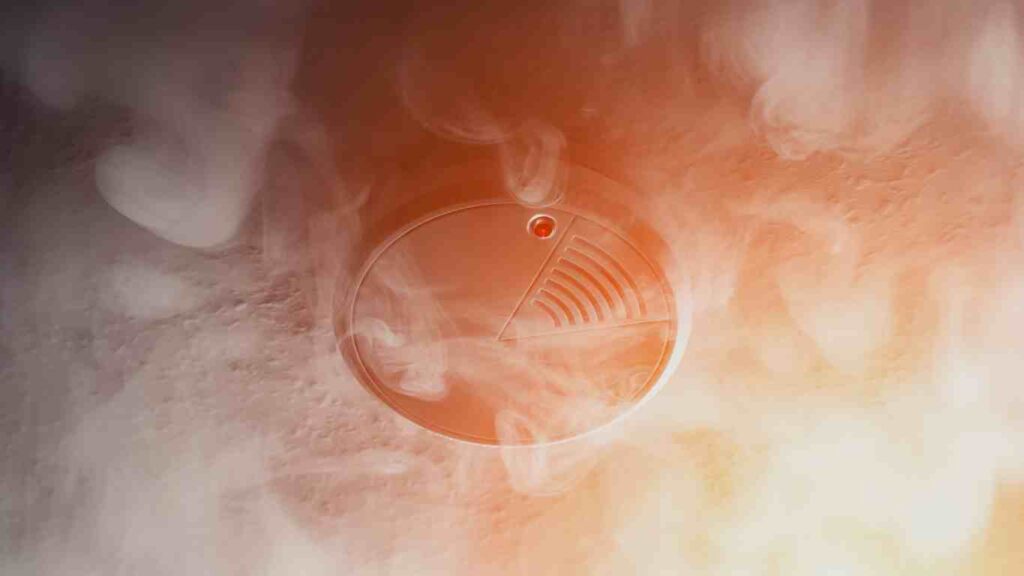
Each year, Fire & Rescue NSW responds to many fires in apartment buildings – reinforcing the need for effective, reliable and up-to-date Essential Fire Safety Measures. Essential fire safety measures are the fire safety systems required by the Building Code of Australia to be installed in commercial, industrial and public buildings, boarding houses, hostels and bed & breakfasts to ensure the safety of occupants within the building in the event of a fire or emergency. They perform a vital function in protecting life, and property and preventing injury in the event of fire. A fire safety schedule, interim/final fire safety certificate or annual fire safety statement issued for the building lists all the essential fire safety measures that are installed in the building and the performance standard to which each of those measures must be capable of operating. Building owners and managing agents need to be aware of these vital fire safety requirements. Failure to comply is an offence and will render the owner liable to substantial penalties. More importantly, a failure to meet these requirements can significantly affect the levels of fire safety afforded to the occupants of the building, which may threaten their life safety, as well as have significant liability implications for the building owner. “At BMAUS we have over 30 years in building management and know that the efficacy of all fire safety measures depends largely on their management and maintenance,” says Ben Mees, BMAUS General Manager. “Our building managers prioritise fire safety and ensure their building’s fire safety measures are not overlooked and operate as they should in the event of a fire. And while this gives residents peace of mind, their knowledge of the relevant legal requirements relating to fire safety measures makes obtaining Annual Fire Safety Statements a smoother, less stressful process for Owners Corporations and Strata Managers.” Annual Fire Safety Statements The Annual Fire Safety Statement (AFSS) is proof that your building’s Essential Fire Safety Measures have been checked and maintained to the Australian Standards and Regulations over the past 12 months. Once an AFSS is secured, it is lodged and displayed rather than filed away. BMAUS building managers ensure their buildings stay compliant by submitting a copy of the AFSS to the local council and Fire and Rescue NSW (FRNSW), along with a copy of the building’s fire safety schedule, and displaying a copy of the statement and building fire safety schedule in their building where it can be easily viewed by everyone. These steps are crucial as they are a legal requirement of building owners, and those who overlook this responsibility face fines. Is your building’s fire safety in good hands? Forgetting to submit your building’s AFSS and putting its fire safety measures, such as smoke detection and alarm systems, in the hands of incompetent and deceptive contractors and inspectors risks the health and safety of residents and can affect insurance payouts in the event of a fire. “In a typical apartment building there is a variety of fire safety measures that all need maintaining and monitoring, such as smoke detectors, alarm systems, fire doors, automatic sprinkler systems, and emergency lights and exit signs,” explains Ben Mees, BMAUS General Manager. “Our building managers ensure a building’s AFSS is current and all its fire safety measures are in good working condition, by scheduling routine maintenance and inspections by qualified, competent and accredited contractors. The AFSS is a condition for insurance coverage – without insurance coverage, you cannot occupy a building. Competent Fire Safety Practitioners Building owners and Managing Agents are required by the Environmental Planning and Assessment Regulation 2000 to select Competent Fire Safety Practitioners (CFSP) to assess their building’s fire safety measures to obtain an AFSS. As selecting a CFSP can be challenging because their competence is largely based on individual experience and skill, the NSW Government recommends the following to help determine competence: 1. Identify tasks that the fire safety practitioner will need to perform. 2. Consider the fire safety practitioner’s competence to perform those tasks, including knowledge, skills, and experience. 3. Establish and record an opinion of the practitioner’s competence. Navigating the fire safety requirements maze At BMAUS, we know how expensive, frustrating and time-consuming it can be to navigate the NSW government’s complex fire safety requirements, ensuring your building’s fire safety measures are maintained to a high standard by the right contractors, and securing and lodging the AFSS on time. “Our building managers are skilled in obtaining AFSS certificates for lodgement to local councils and the FRNSW, assisting with determining the competence of maintenance contractors, reviewing condition reports and quotes, managing contractors, and inspecting their work,” adds Mees.
Concierge Services: are they worth it?

The Growing Importance of Concierge Services in Apartment Development In today’s competitive world of apartment development, developers, sales agents and property managers are increasingly focused on providing residents with a ‘luxurious’ and convenient living experience. More and more apartment buildings are adding concierge services to their list of amenities. Put simply, a concierge is a virtual one-size-fits-all provider of personalised services – from welcoming residents and visitors, hailing a taxi, dealing with tradespeople, accepting and storing deliveries and parcels, to making sure the building is secure. The Role of Concierges in Enhancing Residents’ Lives “For many, concierges aren’t just conveniences but rather essential services for busy lives,” says BMAUS General Manager Ben Mees. “The concierge puts a ‘face’ on the building. They meet and greet, open doors, assist with luggage and deliveries, provide an added layer of security – and they provide familiarity. It gives residents and strata managers peace of mind knowing the building is being well looked after and it helps enhance residents’ lives and the value of their apartments. “In fact, with both large and prestige apartment buildings, a concierge is a must-have service. High-rise and multi-complex apartments have a high number of residents, making a concierge service a necessity rather than a luxury. And with prestige, high-end apartments, owners and residents expect a high level of service in return for their outlay.” Benefits of BMAUS’ Tailored Concierge Services Building Management Australia (BMAUS) provides flexible, tailored concierge services – whether a part-time or full-time concierge is required, or whether 24/7 multi-unit entry access is needed. All BMAUS concierges are friendly and professional, with good communication and organisational skills. Many have customer service and guest services backgrounds in hospitality and five-star hotels, which has given them experience in delivering high-quality service and juggling multiple requests at a time. As many often go the extra mile for residents and Strata Managers, they quickly become a valued part of the building. “At the start of – and during – the pandemic, particularly during lockdowns, the value of having a concierge quickly became known,” says Mees. “With many of our buildings’ residents working from home, our concierges were busier than ever. In a lot of cases, they became defacto PAs, assisting residents through this challenging time. Parcels were sent and arrived constantly, meals, groceries and parcels were arriving en masse. Our concierges made a huge contribution to the residents, making a difficult time more bearable.” 6 benefits of BMAUS’ tailored concierge services Selling point To maintain a competitive edge, developers are increasingly adding concierge services as an amenity in order to enhance the appeal of an apartment building. Not only does having a concierge ‘look good’, it’s an added selling point to entice buyers and tenants and it helps justify the price/rent. What’s more, if competitors are offering such a service, it’s important to match or out-do the competition. It’s a win-win for developers, owner-occupiers, landlords and tenants. “The quality of a property’s amenities plays a huge role in the sales price and rentals that can be achieved. For landlords, a high-end concierge and amenities offering can significantly increase rental returns,” says Mees. “Residents – whether owner-occupiers or tenants – look for differentiating factors.” Enhanced security Having a person at the front desk is a good deterrent to anyone trying to gain access. The concierge can track who comes in and who goes out, ensure contractors and visitors are signed in and accounted for, check identification, supervise common areas, monitor CCTVs and report any suspicious activity to keep residents safe. “Our concierges help improve security by being another set of eyes and ears; they see everyone who enters the building, monitor their movements and notice unusual behaviour,” says Mees. “They will also contact the police at the first sign of an incident, such as a break-in, theft or assault, and assist them when they arrive. Concierges help make residents feel more supported and secure.” Enhanced liveability Concierges create a welcoming environment and enhance residents’ lives by providing a wide range of services tailored to suit their needs, such as: • Greeting residents and visitors • Opening doors • Assisting with luggage and deliveries • Accepting and dispatching parcels and letters • Storing refrigerated items and food deliveries • Pick up and delivery of prescriptions • Running day-to-day errands • Booking taxis and transfer services • Arranging relocation services • Organising the collection and return of dry cleaning • Organising access to apartments for approved trades and cleaners • Providing information on local entertainment, sights and activities • Recommending and booking restaurants, tickets for shows, salon appointments • Provide travel services • Arranging ‘ready to move in’ starter packs for new residents • Ordering flowers and their delivery “As more people have been working from home over the past almost two years, we’re finding new dimensions to the service are being constantly added,” says Mees. Improved health and safety BMAUS concierges help improve the health and safety of residents in many ways, from ensuring everyone in the building adheres to health and safety regulations – such as asking children not to run indoors and tenants not to overload the lift when moving in and out – to making sure everyone abides by current COVID-19 safety regulations. “Concierges are a building’s ‘gatekeeper’, keeping everyone safer,” says Mees. “They won’t let visitors, contractors or couriers enter without a mask and they remind residents and their guests to wear them whilst in the common areas. Our concierges have also been the first to attend to a resident in a medical emergency, calling an ambulance and notifying and comforting their family. Some years ago, one of our concierges even performed CPR on a resident until paramedics arrived.” Reduce costs, save money BMAUS concierges work as a team with our Building Managers to ensure the smooth operation of their buildings. When the Building Manager is off site, the concierge will assume many of the manager’s duties to ensure uninterrupted service to residents. “Our Concierges can reduce
Moving into /out of strata buildings

Streamlining Apartment Moves: BMAUS Building Managers’ Proven Protocol Moving in and out of an apartment is a different experience to a house. There are shared lobbies, lifts, stairwells, hallways, underground car parks and multiple access points to navigate, and other residents to negotiate. And those ‘moving day’ stories, like lift doors opening with no-one inside except for boxes stacked to the ceiling and hallways turned into obstacle courses of furniture, can make anyone a little nervous about an upcoming move. All BMAUS building managers follow an effective, tried-and-tested protocol that’s been agreed on by their building’s Strata Committee and Strata Manager and is designed to make the process smoother for residents, those moving, and their removalists. Maintaining the peace is crucial. “Our building managers know exactly how to facilitate moving in and out,” says Ben Mees, BMAUS General Manager. “You have to think of others, and it’s vital to establish the protocols that keep the peace on moving day and beyond. When a move goes without incident and doesn’t inconvenience residents, everyone is happier. When the building’s property is damaged or common areas blocked for extended periods, it causes issues and can be an added expense.” 4 ways our building managers help make every move smoother: 1. Making a booking Our building managers ask residents to provide notification of their move prior to moving day. NSW Strata Law states that a 14-day notice period is required for any move-ins. Locking in a moving slot ensures the date and time doesn’t coincide with repairs or maintenance to lifts and common areas, or with other residents’ moves. “This way, crowding in hallways and parking areas, and long waits for lifts are avoided and ensure a smooth process,” says Mees. With the moving slot locked in, all residents are then notified so they can plan accordingly. In addition, our building managers record details of the move, including owner/tenant names and apartment number, contact information, removal company name and, if renting, a copy of the lease. “This only takes a few minutes but can save considerable time and money on the day of the move and no prior damage can be attributed to their move,” says Mees. They also advise the best parking areas for the removalist truck(s), and provide the underground car park’s maximum height restriction. 2. Safety and Security First The safety of residents, visitors and contractors is crucial and our building managers have clear responsibilities to ensure this. Their role includes: Checking the removalist company’s public liability insurance certificate of currency. Providing access to the carpark and the building for the removalists and providing specific parking for trucks. Outlining the dedicated lift and hallways to use during the move. Providing lift keys, which hold the doors open so the lift can be loaded at the removalists’ own pace. Providing lift blankets to cover the walls of the lift when furniture is being moved up or down. Ensuring protective materials are used to protect floors. Our building managers monitor every move, ensuring removalists keep to the dedicated routes, don’t block passageways, take care of large pieces of furniture and white goods, and don’t leave unattended items in thoroughfares and lifts that can pose a tripping or obstruction risk. 3. Maintaining ‘house rules’ Every strata scheme has a set of default rules that cover things like reasonable noise limits, not using the property in hazardous or illegal ways, and not making unauthorised changes to the unit. There are also ‘house rules’ that are specific to the development. Our building managers ensure that residents abide by these house rules. And that includes the protocols relating to moving in and out. 4. Leaving nothing behind BMAUS building managers also ensure those moving in or out don’t leave old, broken or simply unwanted property in the building’s common areas. If an item is left, they promptly organise its removal, at the tenant’s or owner’s cost.
